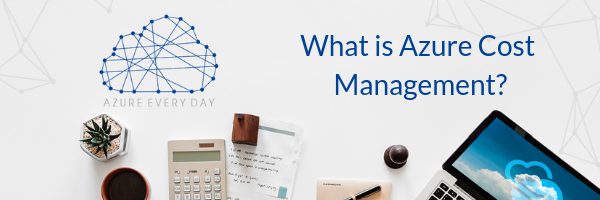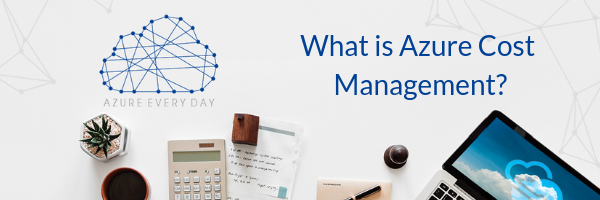

If you’re using Azure, one key piece is effectively planning and controlling the costs involved in running your business. In this post, I’ll discuss what I believe to be one of the most critical functions in Azure that will help you properly deploy and manage your environment.
Azure Cost Management helps you with this planning and cost control. Don’t confuse cost management with billing. To clarify, cost management and billing are two different things; billing is simply retrieving the bill, auditing it for accuracy and paying it. Cost management shows organization cost and usage patterns with advanced analytics.
Reports in cost management show the usage-based costs consumed by Azure services in third party marketplace offerings. Costs are based on negotiated prices and they factor in things like reservation and Azure hybrid benefit discounts for example.
These reports show all your internal and external costs for usage and some of the Azure Marketplace charges. One thing to be aware of when looking at the report is that some other charges such as reservation purchase, support and taxes are not yet shown.
They’ll also help you understand your spending and resource usage, as well as to find any spending anomalies. Some application of predictive analytics is also available to help with future budgeting needs based on your previous usage trends. Using this, Azure Management can deploy groups, budgets and recommendations to show you how your organization expenses are organized and how you can reduce costs going forward.
In addition, in 2018 Microsoft purchased a company called Cloudyn. Cloudyn was a third-party tool that allowed you to manage other cloud providers, as well as your Azure services. Since its purchase, Microsoft has begun to move some of those services over to Azure Cost Management and pulled them out of or stopped supporting them on Cloudyn. The Azure Cost Management page gives you guidance as to which service is best for you.
Besides the service offering, Microsoft also offers some best practices around cost management including some key principles such as:
- Planning ahead of deploying any resources so that the appropriate sizing and services are configured before you ‘jump in the pond’.
- Visibility which gives you some alerting and reporting availability so you can ensure all the effected parties are notified appropriately of the services they are using and the costs they’re incurring.
- Accountability allows you to ensure that those groups are accountable for the services they are using, and they understand the implications of the services they are deploying. And they are getting this information in a timely manner to know what their cost spending is.
- Optimization is the process of deploying those compute resources and making sure you’re looking at where you can save some money like the appropriate licensing structures, using hybrid benefits, bringing your own license (BYOL) and looking at reserved instances for instance. And also looking at what usage your compute is consuming so you can see where you may be able to cut costs.
Azure Cost Management is a continuous, iterative process and the key to managing expenses appropriately is being sure you are keeping an eye on these things I’ve discussed and continually tweaking the services that you’re using.
If you’d like to learn more about Azure Cost Management or anything Azure related, we’d love to help. Click the link below or contact us to start a conversation today about how we can help you use Azure products and services to take your business from good to great.
Sign-up now and get instant access

ABOUT THE AUTHOR
Free Community Plan
On-demand learning
Most Recent
private training



.jpg?width=406&name=Eans%20YouTube%20Thumbnails%20(2).jpg)


-1.png)
Leave a comment